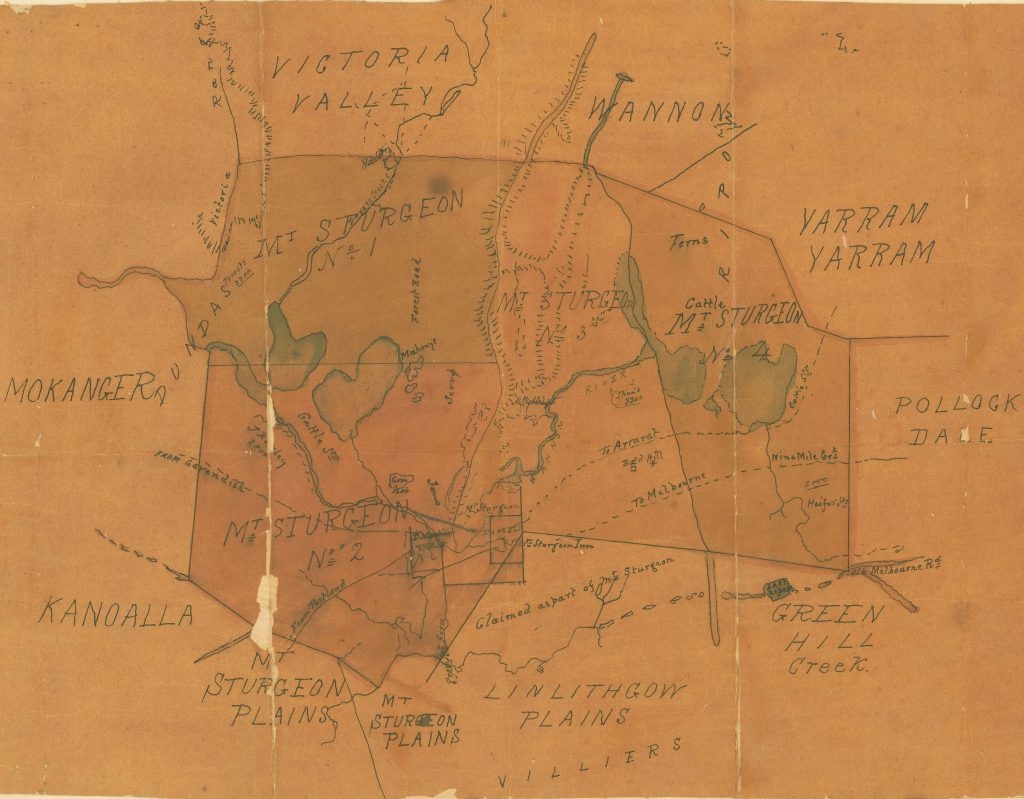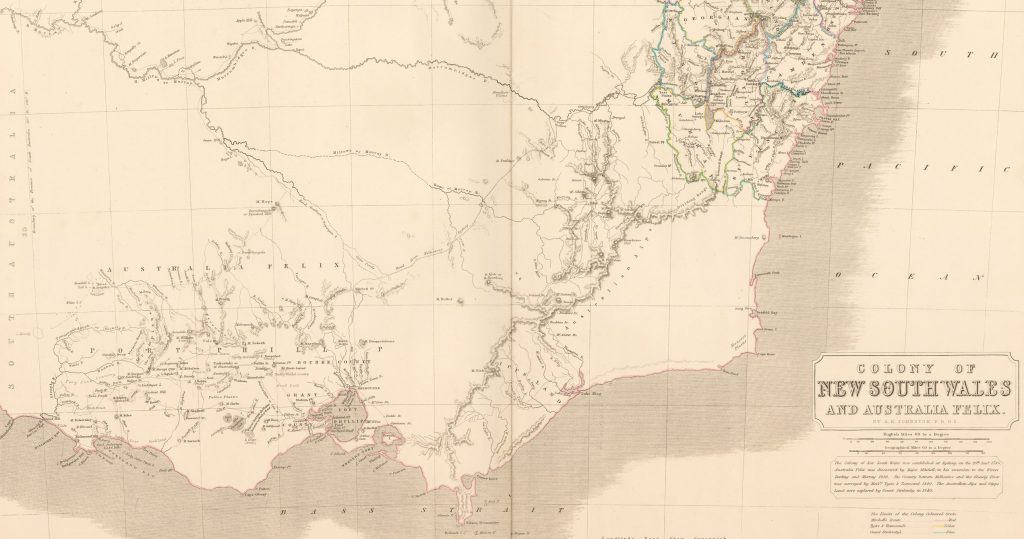How the wetland got its name: discovering the Walkers of Walker Swamp!
From the late 1830s, Major Mitchell’s reports of ‘Australia Felix’ led to a rush to occupy land for grazing in the Port Phillip District of NSW (the area that became present-day Victoria from the 1st of July 1851), especially around present-day Hamilton where significant grasslands existed on the Volcanic Plain.
This wave of squatter-led settlement, resulted in the Mt Sturgeon pastoral run of 112,000 acres being taken up by Dr. Robert Martin in 1839. The run included the wetlands of the upper Wannon River, including Walker Swamp. Dr. Martin held this lease (Number 192 in the Portland Bay District) until 1859, when it was sold to Hugh Glass.
Mr. Glass then subdivided the station into 4 runs in 1862, as shown below, before all four runs changed hands again in 1866.

A fantastic early (c. 1862) map of the Mt Sturgeon Pastoral Run, showing Bryan Swamp (largely within run No 1), Mahony Swamp (largely within run No 2), Dunkeld (run No 3), Brady Swamp and Heifer Swamp (run No 4). Walker Swamp is not mapped but is situated under the word “cattle” in Mt Sturgeon Run No 4.
After a few more transfers, the last holder of the run from 1872, until it was forfeited and the lease cancelled in 1880, was Chas. H. Armytage.
This was as far as I had got with the early European history of the site, until a serendipitous sequence of events back in May shed some light on exactly how Walker Swamp got its modern name.
It turned out that the very day that we announced the Walker Swamp project over the airwaves on ABC Ballarat (on the 11th of May – you can hear that interview here), a lady by the name of Carolyn Walker left a message for me to give her a call.
The story of what happened next was recounted in this short ABC Ballarat Radio interview from last week (Wednesday the 18th of July)… Click on the play button to hear from myself and Carolyn, along with our ABC host, presenter Gavin McGrath.
And so we discovered that Walker Swamp is named after John Walker, and his two sons, Grunwell and Robert Walker, who took up land in the area that includes Walker Swamp, and held it in the family from 1883 for 32 years. The family continued farming elsewhere in the district and the rest is history!
After discussing this rich tale of the site’s early European history over the phone, Greg and I went to meet Carolyn and Ian Walker in person for a cuppa in mid-May. We had a great chat and are now looking forward to showing the descendants of John and Grunwell Walker around the property, and continuing to explore the site’s early European history together over the years ahead.
But we have one more thing to share!
In a fitting finale to our very enjoyable visit back in May, just before we left Ian and Carolyn pulled out this amazing old photo of the Walkers of Walker Swamp!


